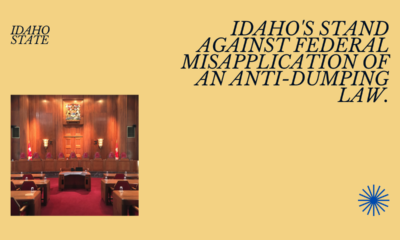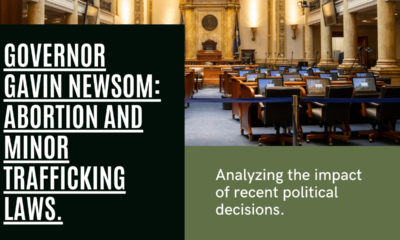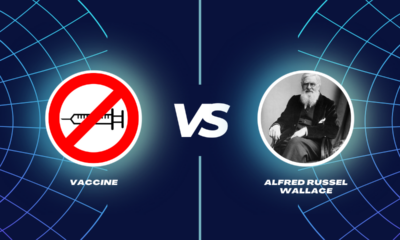Creation Corner
Creation reborn

Creation was once the ruling paradigm of science. A century and a half ago, it fell out of favor. Now it’s coming back, as people realize what the evidence really suggests. Which is: the earth is not old. It is young – and just as young as the Bible says.
Creation counterattacks on three fronts
Creation fell into obscurity, beginning with Lyell and Darwin, and especially with the disastrous case of Tennessee v. Scopes (1925). Others have shown, in more words than space allows here, that:
- William Jennings Bryan lost that case by:
- Accepting uncritically a long age for the earth at a critical moment, and
- Letting Clarence Darrow out-maneuver him.
- The stage play and motion picture, both titled Inherit the Wind, sacrifice historical accuracy to serve a political agenda. That agenda is to promote evolution and to declare that God is unnecessary.
But in 1960, creation started to come back. To bring it back, advocates for creation needed to attack on three fronts. Specifically they needed to show three things:
The Genesis Flood
The fossil record and other geological evidence suggest, not gradual deposit of mud and rock, but a single event that deserves the adjective cataclysmic to describe it. That event was the Global Flood. So Henry M. Morris and John Whitcomb wrote a book called The Genesis Flood, to make that point.
Noah’s Ark
Obviously, once one suggests so great a disaster, one must also suggested how enough people survived so we can talk about it today. The means of that survival is Noah’s Ark. One ought to call it Noah’s Life-ship, for that is how the Hebrew word thevah actually translates. The Bible uses that word to describe two vessels:
-
The great barge that Noah built for himself, his family, and enough specimens of land animals and birds to ensure their survival, and
-
The much smaller vessel that Moses floated in, until a princess of Egypt would draw him out of the water (hence his name).
In 1996, John Woodmorappe published Noah’s Ark: A Feasibility Study. He showed that a barge as large as the Bible says it was (see Genesis 6:9b and following) would:
-
Be eminently seaworthy even in the roughest seas the Flood could throw at it,
-
Hold all the specimens of land animals and birds God told Noah to carry, and
-
Be manageable by a crew of eight adults.
Nor was he the last. Other would-be historical shipwrights have examined this question in detail. No two of them agree on what this vessel looked like. But generally they would agree that:
- Noah would at least have had available to him the technology of ancient Greek and Roman shipwrights, and could have built his Ark with either.
- We do not know how advanced pre-Flood technology was. Whatever technology Noah had, the Flood destroyed.
Age of the earth
The last objection is that the earth was too old for the Genesis story. And now that objection, too, is falling to the ground.
The failures of the long age model

Diagram showing the chains of decay of the naturally-occurring trans-lead elements. Graphic: User “Johan the Ghost” (Wikimedia Commons), CC BY-SA 3.0 Unported License
The long age model of the earth made a key retreat in the early twentieth century. Lyell insisted the earth was eternal and ageless. Henri Becquerel and Pierre and Marie Curie would show this could not be. But the long age model settled at 4.5 billion years. Promoters of this model assumed three things:
-
A rock containing a radioactive element always forms with no “daughter nuclide” in it.
-
Nothing changes the amounts of parent or daughter nuclide except radioactive decay.
-
Radioactive decay rates stay constant, or rise and fall around a constant average, even over billions of years.
Similarly, astronomers assumed the universe was eternal and ageless. But cosmologists, including Albert Einstein, showed this could not be. The universe must have begun at a definite time in the past. Edwin Hubble and others marked that time: about 13.7 billion years ago.
At least those ages were consistent. But problems came up with both models.
Dark matter and energy
The Big Bang model says the universe, including space itself, began as a point and expanded, almost instantly, from that point to the vast space we know today. But the model has two problems:
Certain galaxies, and larger objects that include galaxies, spin too fast for their masses. They should be flying apart, in fact. So astronomers now assume the mass we can see is not the total mass of any galaxy or larger object. The difference between what we can see and what we can “feel”, conventional astronomers call dark matter. And they can no more explain what that is than they can fly under their own power.
Worse yet: since 1996, astronomers have known that the universe is accelerating in its expansion. Even though it should be slowing. Whatever it is, that is pushing the universe to fly apart, they now call dark energy. And they can no more explain that than they can explain dark matter.
Radiometric dating goes bust!
But the worst blow to the long age theory fell here on earth. This blow destroyed the credibility of the one thing that a long age now relies on: radiometric dating.
The Mount Saint Helens Debacle
In 1986, Mount Saint Helens in Washington State erupted. A lava dome formed, cooled, and sealed the crater once again. Then in 1996, Steven A. Austin and his team sent five samples of dacite from that dome to Geochron Laboratories in Massachusetts for potassium-argon dating. They warned the staff of Geochron: these samples should be low in argon. They wanted to know: would the Geochron staff recognize they had young rocks and send the samples back, saying “Undetectable argon; age of specimens indeterminate”?
That’s not what they did. Instead they sent back five separate ages, varying from half a million years to two point eight million years. The five ages were further apart than their tolerances would allow.
Austin published his findings here. (Austin SA, “Excess Argon within Mineral Concentrates from the New Dacite Lava Dome at Mount St. Helens Volcano,” TJ 10(3), 1996.)
And the worthies at Geochron cried:
FOUUUUUUUUUUUUUUUULLLLLLLLLLLLLLLL!
The apologists for Geochron are still crying “Foul!” They say Austin cheated at the game by sending in samples of rock he knew were too young to “date.” Why, then, did not Geochron simply say they found no argon? But of course, they found plenty of argon. Too much. Enough to make them think they had rocks as much as 2.8 million years old.
In the face of that finding, other critics then say that Austin sent in samples that held xenocrysts, or “strange glass.” The “strange glass” held the extra argon. That is a far more serious cheat. A scientist who falsifies his data commits, according to the Yale University Student Handbook,
an offense of such gravity that it warrants excommunication from the community of scientists.
Let the reader judge why those critics never sought a formal sanction against Austin. (Maybe they can move for that sanction before the judge of the Literal Genesis Trial Contest.)
Geochron Laboratories no longer does potassium-argon dating. One can only guess why. But if they had been a hospital laboratory, and made a comparable mistake in a proficiency sample, the College of American Pathologists would have shut them down for their pains. (Your editor once took an active part in the CAP Laboratory Accreditation Program, and joined a team that made several inspections.)
Nor was this all.
The Crinum Tree
In 1993, miners at the Crinum Coal Mine in Queensland, Australia, found a fossilized tree buried in basalt. Andrew Snelling and his team sent samples of the wood to two laboratories for carbon-14 dating, and samples of the surrounding rock to two laboratories for potassium-argon dating. One laboratory received a sample of the rock and a sample of the wood. (Its name: Geochron.) Results:
-
Apparent age of the wood: 37,000 years.
-
Apparent age of the rock: over thirty-five million years. Not only that, but the “ages” varied beyond their tolerances. Recall that Austin got the same kind of result.
Snelling published his findings in the journal Creation four years later. And the howls of outrage have not died down about this, either. A typical critic says no one would try to date a fossil with carbon-14 dating. Most laboratories will not accept a sample for carbon-14 dating if an investigator has reason to believe it older than 10,000 years. But neither Geochron nor the Antares Mass Spec Lab in New South Wales said one word about problems dating the wood. Quite opposite, in fact! They staunchly defended their results – until Snelling’s paper came out. And then…!
The RATE Group
These preposterous and ignominious failures led Larry Vardiman to assemble a team of physicists to re-examine the radiometric-dating concept in detail. Since no conventional team would even admit anything was wrong, he would. Vardiman and colleagues formed the Radioisotopes and the Age of The Earth (RATE) Project. They found ample evidence to destroy all three of the assumptions behind radiometric dating. Not one is safe. For example, they found:
Halo formations in minerals containing polonium. This is a clear sign that radioactive decay occurred much faster than normal.
The “dates” of key strata in the Grand Canyon do not co-ordinate. Some methods give different ages from others. Even “isochron” dating (a method that tries to average out the decay of different rocks in the same place) fails the key test of consistency. Furthermore, the RATE team found that conventional scientists have known about this problem for years, and tried to cover it up.
Critiques of the RATE Group generally amount to no more than: “They didn’t apply the usual corrections.” Meaning that they wanted no part of any cover-up!
As devastating as this is, this is not the worst attack on the long age theory. That attack consists of the most comprehensive theory of creation and the Global Flood anyone has invented so far.
Related:
[subscribe2]
Terry A. Hurlbut has been a student of politics, philosophy, and science for more than 35 years. He is a graduate of Yale College and has served as a physician-level laboratory administrator in a 250-bed community hospital. He also is a serious student of the Bible, is conversant in its two primary original languages, and has followed the creation-science movement closely since 1993.
-

 Education3 days ago
Education3 days ago‘Grading for Equity’: Promoting Students by Banning Grades of Zero and Leaving No Class Cut-Ups Behind
-

 Civilization5 days ago
Civilization5 days agoEarth Day Should Celebrate U.S. Progress & Innovation
-

 Family3 days ago
Family3 days agoIdaho defends against abortion mandate
-

 Civilization4 days ago
Civilization4 days agoNewsom plays silly abortion politics
-

 Constitution2 days ago
Constitution2 days agoPresidential immunity question goes to SCOTUS
-

 Education5 days ago
Education5 days agoThe Intifada Comes to America. Now What?
-

 Civilization5 days ago
Civilization5 days agoEarth Day – part of cultural Marxism
-

 Civilization4 days ago
Civilization4 days agoWaste of the Day: China Still Owes Over $1 Trillion to American Bondholders















[…] Reprinted from Conservative News and Views […]